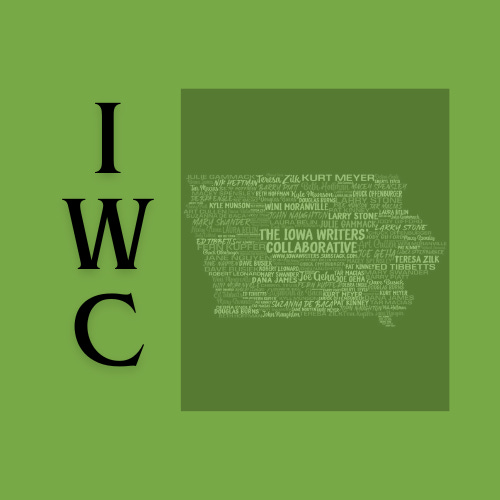Iowa's Tornado Surge: Exploring the Links Between Climate Change and Increasing Severe Weather
2024 Sets Record for Number of Tornadoes in Iowa
2024 Sets Record for Number of Tornadoes in Iowa
April 26th, a major tornado outbreak ripped through western Iowa. There were 44 confirmed tornadoes that day. While the record number of tornadoes on a given day is still 70, back on December 15, 2021, 2024 holds the record for the greatest number of twisters in a year. So far, 131 twisters have touched down across the state, at least three of them were considered strong, or an EF2 or greater.
The days, where there are only one or two tornadoes during a single day, have decreased. We are seeing an increase in tornado outbreaks.
Tornado Outbreaks and Climate Change: Is the Threat Growing?
As climate change continues to reshape our planet, its effects on extreme weather events have become a central focus of scientific research. Among these phenomena, tornadoes—highly destructive and often unpredictable—pose significant risks. Recent studies are shedding light on how climate change may be influencing tornado activity, particularly the frequency and intensity of tornado outbreaks. But are these changes a direct result of global warming, or are they more complex than they first appear?
The Rise of Tornado Outbreaks
Recent research indicates that tornado outbreaks—events where multiple tornadoes occur in a concentrated period—are becoming more frequent, especially the most extreme ones. A study published in Science found that the frequency of such extreme outbreaks has increased significantly in the United States over recent decades. However, this study also suggests that the reasons for this trend are not entirely straightforward, with factors beyond direct warming playing a role.
Regional Shifts in Tornado Activity
Adding to the complexity, a study published in npj Climate and Atmospheric Science by Gensini and Brooks highlights significant regional shifts in tornado activity within the United States. According to this research, while the overall annual frequency of tornadoes has remained relatively stable, there have been notable changes in where and when tornadoes are most likely to occur. Specifically, the Great Plains—traditionally known as "Tornado Alley"—has seen a decline in tornado activity, while the Midwest and Southeast have experienced an increase.
This spatial shift suggests that while climate change might not be increasing the total number of tornadoes, it could be altering the environmental conditions that lead to tornado formation in different regions. The study employed the Significant Tornado Parameter (STP), a metric used in forecasting tornado environments, and found that the frequency of environments conducive to tornadoes has increased in the Southeast and Midwest. This eastward shift in tornado activity aligns with broader climatic trends, such as the observed eastward movement of the "100th meridian," which traditionally marks the boundary between the more arid western United States and the more humid eastern regions.
Climate Change as a Threat Multiplier
While both studies underscore the complexities directly linking tornado activity to climate change, they suggest that climate change could be acting as a threat multiplier. This concept refers to climate change exacerbating existing risks, making extreme weather events more severe or more frequent. In the case of tornadoes, climate change might not be the sole cause of increasing tornado outbreaks or shifting regional patterns, but it could be amplifying the factors that contribute to these changes.
For example, the increased variability in tornado activity observed in recent decades could be linked to the broader changes in atmospheric patterns driven by climate change. Warmer temperatures can lead to more moisture in the atmosphere, which in turn can fuel more intense storms. Additionally, changes in large-scale atmospheric circulation patterns, influenced by a warming climate, could be contributing to the shifting geographic distribution of tornadoes.
Implications for the Future
The future of tornado activity remains uncertain, but the trends observed in these studies highlight the need for continued research and preparedness. As climate change progresses, it is crucial to understand how it interacts with natural variability and regional factors to influence tornado activity. This understanding is vital for improving forecasting, updating building codes, and enhancing disaster preparedness, especially in regions like the Southeast where tornado frequency is increasing.
Moreover, the economic and societal impacts of these shifts cannot be overlooked. The Southeast is already vulnerable to tornadoes, and an increase in tornado activity in this region could lead to more frequent and severe disasters. According to Gensini and Brooks, the combination of increasing tornado frequency and growing human populations in these regions could significantly raise the risk of tornado-related disasters in the coming decades.
Conclusion
The relationship between climate change and tornado activity is complex and multifaceted. While recent research does not definitively attribute the increase in tornado outbreaks or the regional shifts in tornado activity to climate change alone, it strongly suggests that climate change could be intensifying the conditions that lead to these events. As such, climate change may indeed be acting as a threat multiplier, amplifying the risks and impacts of tornadoes across the United States.
As we continue to navigate a warming world, it is crucial to stay informed and prepared. Understanding the evolving nature of tornado risks will be essential for building resilient communities and mitigating the impacts of these devastating storms. While we may not yet fully understand all the factors at play, the evidence points to a future where the threat of tornadoes could be greater and more widespread than ever before.
I am happy to be part of the Iowa Writer’s Collaborative! Please let me know what you would like to hear about next!
(If you have the means, please consider upgrading to a paid subscription.)





Thank you for this article!
We spent more daytime in the basement with my Grandchildren & pets this year then I ever had in 65 years.
The day of the Greenfield tornado it thundered non stop for 42 minutes here.
Miss your weather reports here in Iowa!
Wow! Thanks for your work!